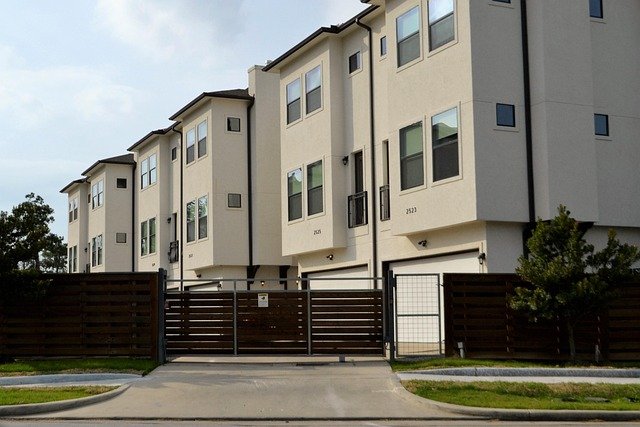Reimagining Urban Density: The Rise of Micro-Apartments
The real estate landscape is witnessing a seismic shift as micro-apartments gain traction in major metropolitan areas worldwide. These compact living spaces, typically ranging from 200 to 400 square feet, are reshaping urban housing markets and challenging traditional notions of home ownership. As cities grapple with population growth and housing shortages, micro-apartments emerge as a potential solution to optimize space and affordability.

The Genesis of Micro-Living
The concept of micro-apartments is not entirely new. In densely populated cities like Hong Kong and Tokyo, compact living has been a necessity for decades. However, the modern iteration of micro-apartments began to take shape in the early 2000s, driven by a perfect storm of economic, demographic, and cultural factors.
Urbanization, coupled with skyrocketing real estate prices in major cities, created a demand for affordable housing options. Simultaneously, changing demographics saw an increase in single-person households and young professionals seeking centrally located residences. These factors, combined with a growing interest in minimalism and efficient living, set the stage for the micro-apartment revolution.
Economic Implications of Micro-Apartments
Micro-apartments present a unique economic proposition in the real estate market. For developers, these units offer the potential for higher returns per square foot. By maximizing the number of units in a building, developers can increase their profit margins, especially in high-demand urban areas where land is at a premium.
For renters and buyers, micro-apartments provide an entry point into desirable neighborhoods that might otherwise be financially out of reach. This accessibility factor has made them particularly appealing to young professionals, students, and those seeking a pied-à-terre in the city center.
However, the economic impact extends beyond individual transactions. Micro-apartments have the potential to alleviate housing shortages in urban areas, potentially stabilizing or even reducing rental prices in certain markets. This ripple effect could have far-reaching consequences for urban economies and real estate markets.
Design Innovations in Micro-Living
The success of micro-apartments hinges on innovative design solutions that maximize space efficiency without sacrificing livability. Architects and interior designers are pushing the boundaries of creativity to transform these small spaces into functional and aesthetically pleasing homes.
Multifunctional furniture plays a crucial role in micro-apartment design. Murphy beds that fold into walls, dining tables that convert into work desks, and storage solutions integrated into every nook and cranny are becoming standard features. Some micro-apartments even incorporate movable walls and modular elements that allow residents to reconfigure their space throughout the day.
Technology is also playing a pivotal role in enhancing the micro-living experience. Smart home systems that control lighting, temperature, and entertainment systems can create the illusion of a larger space. Virtual reality and augmented reality applications are being developed to help potential buyers visualize different layouts and furniture arrangements within these compact spaces.
Regulatory Challenges and Urban Planning
The rise of micro-apartments has not been without controversy. Many cities have had to grapple with outdated zoning laws and building codes that were not designed with such small living spaces in mind. Minimum square footage requirements, parking regulations, and occupancy limits have all come under scrutiny as developers push for more flexible guidelines.
Some cities have embraced the trend, recognizing the potential of micro-apartments to address housing shortages and promote sustainable urban development. New York City, for example, launched a pilot program in 2013 to test the viability of micro-units, temporarily waiving certain zoning regulations. Other cities have followed suit, creating special designations for micro-housing developments.
However, concerns about quality of life, overcrowding, and the long-term impact on neighborhoods have led some municipalities to approach micro-apartments with caution. Striking a balance between innovation and regulation remains a key challenge for urban planners and policymakers.
The Future of Urban Living
As micro-apartments continue to gain traction, questions arise about their long-term viability and impact on urban landscapes. Will they remain a niche market or become a mainstream housing option? How will they affect community dynamics and social interactions in densely populated areas?
Some experts predict that micro-apartments will evolve into more complex ecosystems, with shared amenities and communal spaces becoming increasingly important. The concept of “co-living” is already gaining traction, blending private micro-units with shared kitchens, lounges, and workspaces.
Others speculate that advancements in virtual and augmented reality could further revolutionize micro-living, allowing residents to expand their perceived living space beyond physical boundaries. The integration of smart home technology and artificial intelligence could also enhance the efficiency and comfort of these compact dwellings.
As cities continue to grow and evolve, micro-apartments represent a bold reimagining of urban living. They challenge our assumptions about space, comfort, and community, offering a potential solution to some of the most pressing housing issues of our time. Whether they become a widespread phenomenon or remain a niche market, micro-apartments have already left an indelible mark on the real estate landscape, prompting us to rethink the very notion of what constitutes a home in the 21st century.





